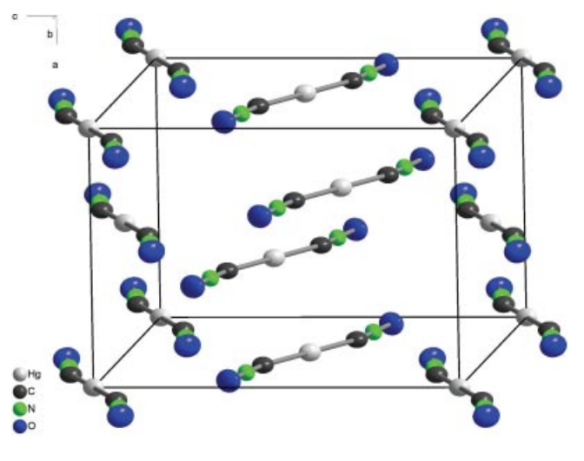An Explosive Result – Mercury (II) Fulminate
What does it look like?

Structure taken from original paper (see below).
What is it?
Mercury fulminate is what’s known as a "primary explosive. Being highly sensitive to shock and friction, it was commonly used as a detonator for dynamite and in percussion caps on muzzle loading firearms throughout the 19th and 20th centuries. Initially discovered in the 17th and 18th centuries, one early chemist, Johannes Kunckel noted:
"I once dissolved silver and mercury together in aqua fortis, and, having added spiritus vini, set the vessel aside in the stable. When by the next day, its temperature had risen, there occurred such a thunder clap, that the groom thought someone had shot at him through the window, or that the very devil had appeared in the stable. But I realized that it was my experiment that had exploded."
Although some initial investigations were carried out by F. D. Miles as early as 1931, it wasn't until 2007 that the full crystal structure of this molecule was first published.
Where did the structure come from?
Structure originally published by W. Beck, J. Evers, M. Gobel, G. Oehlinger, T. M. Klapotke, Z. Anorg. Allg. Chem. 2007, 1417-1422. An excellent history of the discovery of fulminates and their role in history is given by F. Kurzer J. Chem. Ed. 2000 77, 7, 851-857.






